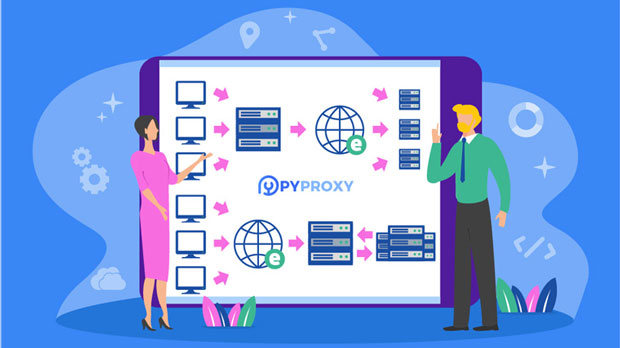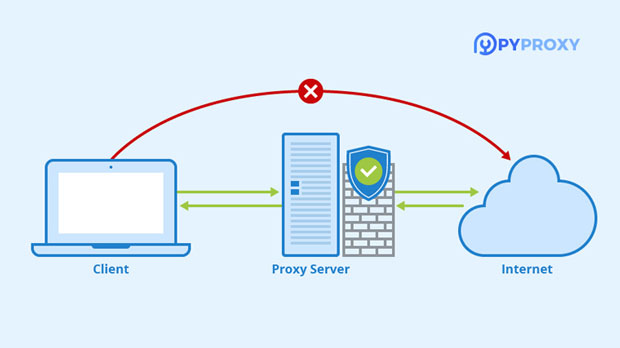In today's digital world, proxy services have become essential for businesses and individuals to access websites, mask IP addresses, and manage online operations. Among the various types of proxies available, residential proxies and data center proxies stand out as two primary options. While both offer similar benefits, their differences are significant and often determine which service is best suited for specific needs. Understanding these differences is crucial, as it helps users make informed decisions about which proxy type to use based on factors such as anonymity, speed, cost, and reliability. This article explores the distinctions between residential and data center proxies, providing a detailed analysis of their unique features, advantages, and best use cases. What is a residential proxy?Residential proxies are IP addresses assigned by Internet Service Providers (ISPs) to homeowners. These proxies are connected to real devices, such as personal computers or smartphones, and offer a high level of authenticity. When a user routes their internet traffic through a residential proxy, the IP address appears as though it's coming from a legitimate home user. This makes residential proxies highly effective in bypassing geographic restrictions and preventing IP blocking by websites.One of the primary benefits of residential proxies is their ability to provide a high level of anonymity. Because they are tied to real residential addresses, websites typically can't detect that the user is accessing their service through a proxy. As a result, residential proxies are often used for web scraping, market research, or any application where maintaining anonymity is crucial.However, these proxies tend to be more expensive compared to data center proxies. The cost is due to the fact that they require a network of residential users, which is harder to maintain. Additionally, residential proxies may be slower than data center proxies due to the inherent limitations of residential internet connections.What is a Data Center Proxy?Data center proxies, on the other hand, are IP addresses that are generated from data centers rather than residential networks. These proxies are typically faster and more affordable than residential proxies since they are created in bulk and do not rely on real-world devices or ISPs. Data center proxies are often used by businesses for tasks that require high-speed internet access and large-scale data scraping.While data center proxies can provide faster speeds and lower costs, they are more easily detectable by websites and online services. Websites can recognize data center proxies by their IP address range, which is often associated with known data centers. This means that users might face IP blocking or rate limiting if they use data center proxies for certain activities, such as scraping large amounts of data from a website.Despite these limitations, data center proxies are still highly useful for many applications, especially when anonymity is less of a concern. For example, they are commonly used for SEO tasks, ad verification, and accessing geo-restricted content.Key Differences Between Residential and Data Center ProxiesThe main differences between residential and data center proxies revolve around their source, speed, cost, and anonymity. Understanding these distinctions can help users determine which proxy type is more suitable for their needs.1. Source of IP AddressThe most significant difference between residential and data center proxies is the source of their IP addresses. Residential proxies use real, geo-located IP addresses that belong to residential users. This gives them a high level of legitimacy and makes them difficult to detect by websites. In contrast, data center proxies are generated in large numbers from data centers, making them more likely to be flagged by websites as proxy traffic.2. Speed and PerformanceIn terms of speed and performance, data center proxies usually have an advantage. Since data centers are designed for high-speed internet connectivity, data center proxies can provide faster speeds and more reliable connections than residential proxies. Residential proxies, on the other hand, may experience slower speeds due to the limitations of residential internet connections and the fact that they are often shared across multiple users.3. CostResidential proxies are generally more expensive than data center proxies. The higher cost is a result of the more complex infrastructure needed to maintain a network of real residential IPs. Data center proxies, being cheaper to produce, offer a more affordable alternative for users who do not require the added benefits of residential proxies.4. Anonymity and DetectionResidential proxies provide a higher level of anonymity, as they are less likely to be detected by websites. This makes them ideal for tasks that require complete anonymity, such as scraping sensitive data or accessing geo-restricted content. On the other hand, data center proxies are more likely to be detected because they originate from data centers that are known to provide proxy services. While they can still be effective for many tasks, they are less suited for activities where anonymity is a priority.5. Use CasesResidential proxies are best suited for activities where high levels of anonymity and undetectability are essential. These include web scraping, account management, and accessing region-locked content. Their ability to mimic real-user traffic makes them an excellent choice for bypassing geographic restrictions or preventing bans.Data center proxies, however, are more appropriate for tasks that do not require high levels of anonymity. They are commonly used for SEO research, ad verification, and tasks that require high-speed connections. Their affordability and speed make them an attractive option for users looking to perform large-scale operations without breaking the bank.Which Proxy Should You Choose?The decision between residential and data center proxies largely depends on the specific requirements of the user. If the task requires high anonymity, bypassing stringent geo-blocks, or preventing detection by websites, residential proxies are the better option. While they come at a higher cost and potentially slower speeds, their ability to emulate real users makes them ideal for sensitive operations.However, if speed and cost efficiency are the primary concerns, and the task does not require maintaining complete anonymity, data center proxies are the more practical choice. They provide fast connections, are affordable, and can handle large volumes of traffic, making them suitable for tasks like SEO, ad verification, and web scraping.Both residential and data center proxies offer valuable services, but understanding their differences is essential to choosing the right one for your needs. Residential proxies excel in anonymity and avoiding detection, making them ideal for sensitive tasks. Data center proxies, on the other hand, provide a more cost-effective and faster solution for operations where speed and efficiency are prioritized. By carefully evaluating the nature of your activities, you can select the proxy type that best aligns with your objectives.
Apr 09, 2025
![arrow]()




























































